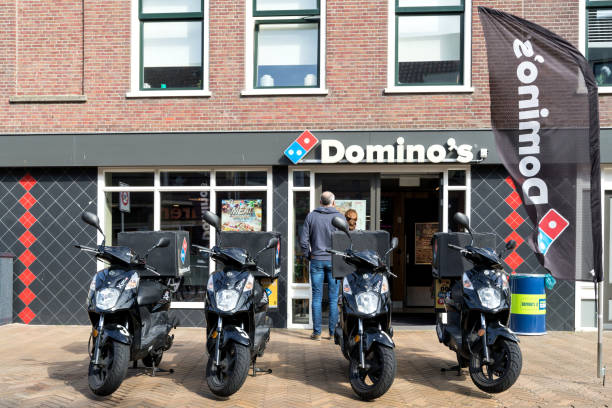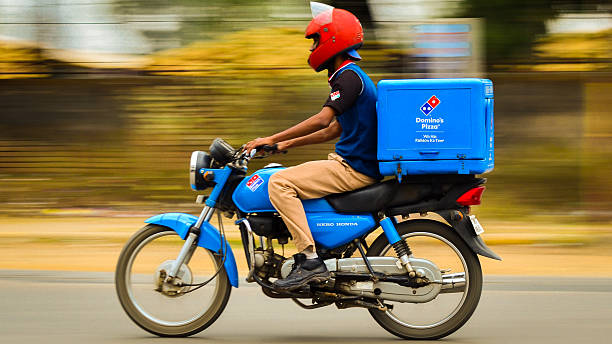
As one of the country’s leading pizza chains, Domino’s has established a great legacy throughout the years. But to stay ahead, it continuously experiments with new ways to improve their customers’ experience and one of these innovations is the Pizza Tracker.
This app monitors your Dominos pizza “journey” from the time it’s prepared to the time it’s delivered. However, according to The Wall Street Journal (via Fox News), some individuals have suggested that the tracker might not be telling the truth.
In 2017, issues with the Pizza Tracker app began to surface. Customers observed discrepancies between the tracker’s delivery times and the actual times during store hours, and even more concerning, it occasionally identified the wrong delivery person. Let’s find out the real truth about Domino’s Pizza Tracker in this post, shall we?
What is Domino’s Pizza Tracker?
Domino’s introduced its pizza-tracking technology in 2008, enabling customers to follow the progress of their pizzas through an animated status bar on the Domino’s website. At the time of its release, Domino’s proudly stated:
“Pizza Tracker will allow customers to know when their order is being prepared, when it’s out of the oven, and when it’s out the door and on its way. It even includes the first name of the person delivering the order.”
The company expanded this technology to their mobile app in 2011.

How Does the Domino’s Pizza Tracker Work?
According to this article by HuffPost, the Pizza Tracker operates in a specific sequence that the store is supposed to follow:
When you place your order online, it gets sent to the store, where labels are printed and placed on boxes. The order then appears on a screen at the make-line station.
The staff member at the make-line assembles your items and marks the order as prepared. The tracker updates, showing that your order is now in the oven.
After about seven minutes, the order should be out of the oven and in the process of being boxed (this step is automatically timed and doesn’t require manual input from employees).
Once boxed, the delivery driver packs the items in a hot bag, collects any additional items you ordered (such as sodas, sauces, or chips), and “punches out” the order, signaling that it is on its way. The tracker updates again to inform you that your order is enroute.
Finally, when the delivery is completed and the driver returns to the store, they sign back in to indicate that the delivery run is finished. The tracker updates one last time, although by then, you should already be enjoying your pizza.

Is the Domino’s Pizza Tracker Legit?
Domino’s firmly maintains that their Pizza Tracker is genuine and reflects actual store operations. Jenny Fouracre-Petko, a company spokesperson, has explained the occasional inaccuracies of the tracker, stating,
“Pizza Tracker is real and is based on actual store operations. The issue is that it does require some human interaction and sometimes humans make mistakes. We are sorry about those instances, and we will always work to correct those operational issues. Those instances are notable because they are unusual. The vast majority of the time Pizza Tracker works as designed.”
Factors That Could Affect Your Pizza Tracker Experience
There are several factors that can influence your experience with the Pizza Tracker, particularly because delivery drivers can sometimes “game the system.”
According to Domino’s policies, drivers are generally not supposed to handle more than two or three deliveries at a time. Corporate policy is very strict about this to ensure timely delivery. Despite the end of the “30 minutes or it’s free” guarantee, Domino’s still aims to deliver orders within 30 minutes to maintain customer satisfaction.
However, this rule is more feasible for stores with smaller delivery areas and sufficient drivers to handle the volume of business.
For instance, a store in Pittsburgh’s East Liberty neighborhood that covered roughly half of the city, including all major college campuses, hospitals, the Strip District, and several neighborhoods, faced significant challenges.
With an average of eight to ten drivers per night, they find it difficult to adhere strictly to the rules. To make a decent living, drivers often took four to six deliveries at a time, depending on the delivery area.
Under such circumstances, a 45-minute delivery time was more realistic. Customers were informed that their orders would take between 30 to 45 minutes, and most were satisfied unless it took longer. However, the tracker and the in-store Pulse software are designed to follow corporate standards rather than adapt to individual store practices.
Each store’s performance is eventually evaluated based on these broad corporate standards, which may not always be applicable. Every order is timed from when it’s placed to when it’s marked as completed. These statistics are reported for store evaluations which influence how a store is rated, treated, and monitored by supervisors.
To ensure their stats look better, some stores might occasionally manipulate numbers and cut corners. While this doesn’t usually affect the customer who still receives their pizza within a generally acceptable timeframe, it does make the store appear more efficient than it might actually be.